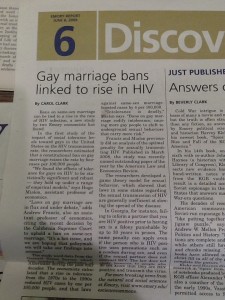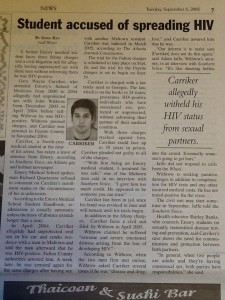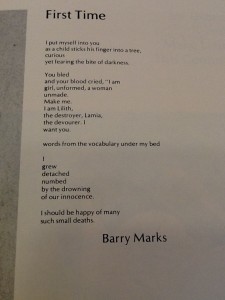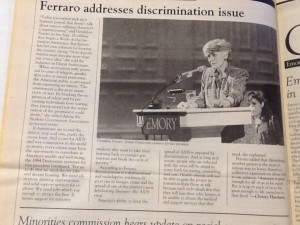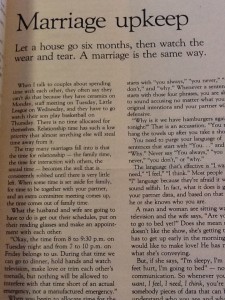‘Queerness, then, is not an identity, but a position or stance. We can use “queer” as a verb instead of a noun. Queer is not someone or something to be treated. Queer is something we can do. The black woman is the original Other, the figure against which white women’s sexuality is defined..to be silent is, yes, unexpected in a world of stereotype. However, silence merely stifles [us]. Silence does not change the status quo.’
– [1] Kimberly Springer, “Queering Black Female Heterosexuality”
It has been an exciting and insightful semester in From Archives to iPads: Investigating the Discourse on Sexuality at Emory. We have all exposed and engrossed ourselves in a world of sexuality. We have investigated Emory’s history as we leafed through old yearbooks and Emory Reports/Wheels. We have investigated sexuality in relationships, the sexual desires within us, sexually transmitted diseases, and sexual assault.
What we have done most this semester however, is talked. We have communicated our views and stands on sexually related issues and heard each other’s opinions about matters that affect us all. We have also learned how to keep silent. Silence is powerful- overriding communication, in my opinion. Our silence can denote our respect others opinions and our restraint to object however, this can also translate to our lack of concern. It can have detrimental effects, as we have seen with individuals failing to express their sexual preference, individuals failing to communicate medical conditions, and the inability to say ‘no’ and combat rape.
To finish off the semester, we have read an article by Kimberly Springer. In “Queering Black Female Heterosexuality,” she discusses the stereotypes of the black female and how pop culture views them- ‘hoes with silicone breasts and butts that jiggle and quake’. She also goes into great detail of the difficulties surrounding black women to profess their pleasures in sex without being viewed as “too fast” and a “jezebel” to society.
Public assumptions about black female sexuality cause insecurities within these woman and young women entering this group. ‘Perhaps, if we do not speak about black woman and sex, the whole issue will go away.’ Why can’t these women profess their sexual preferences and stand strong to their confessions without adopting negative stigmas by others?
This issue also can resonate with everyone and all communities. How easy is it to keep silent in these situations? Why has it become the norm for us as a society to create these stigmas of black females, heterosexuals, gay, and queer individuals? Why do we target black females as being sex icons?
Does this vision of black females victimize them sexually? When we think of rape and how it occurs, when one person fails to communicate and unwilling has sex, does this unwillingness to project themselves another form of sexual violence?
Silence and communication is essential to sexuality. What we fail is our ability to act one way or another. We should be able to profess openly about our sexual preferences and pleasures without receiving any negative push back from others; black females ultimately desire this. We should also learn how to tame ourselves and learn how to keep silent so that we can listen to each other’s needs and wants and prevent sexual assault. Silence will not change the status quo but it will defiantly feed it further unless we gather the courage to speak up and communicate our fight against sexual victimization and assault- it begins with NO!
[1] Springer, Kimberly. Yes Means Yes. Chapter 6: “Queering Black Female Heterosexuality” 77-91. California. Seal Press, 2008.

